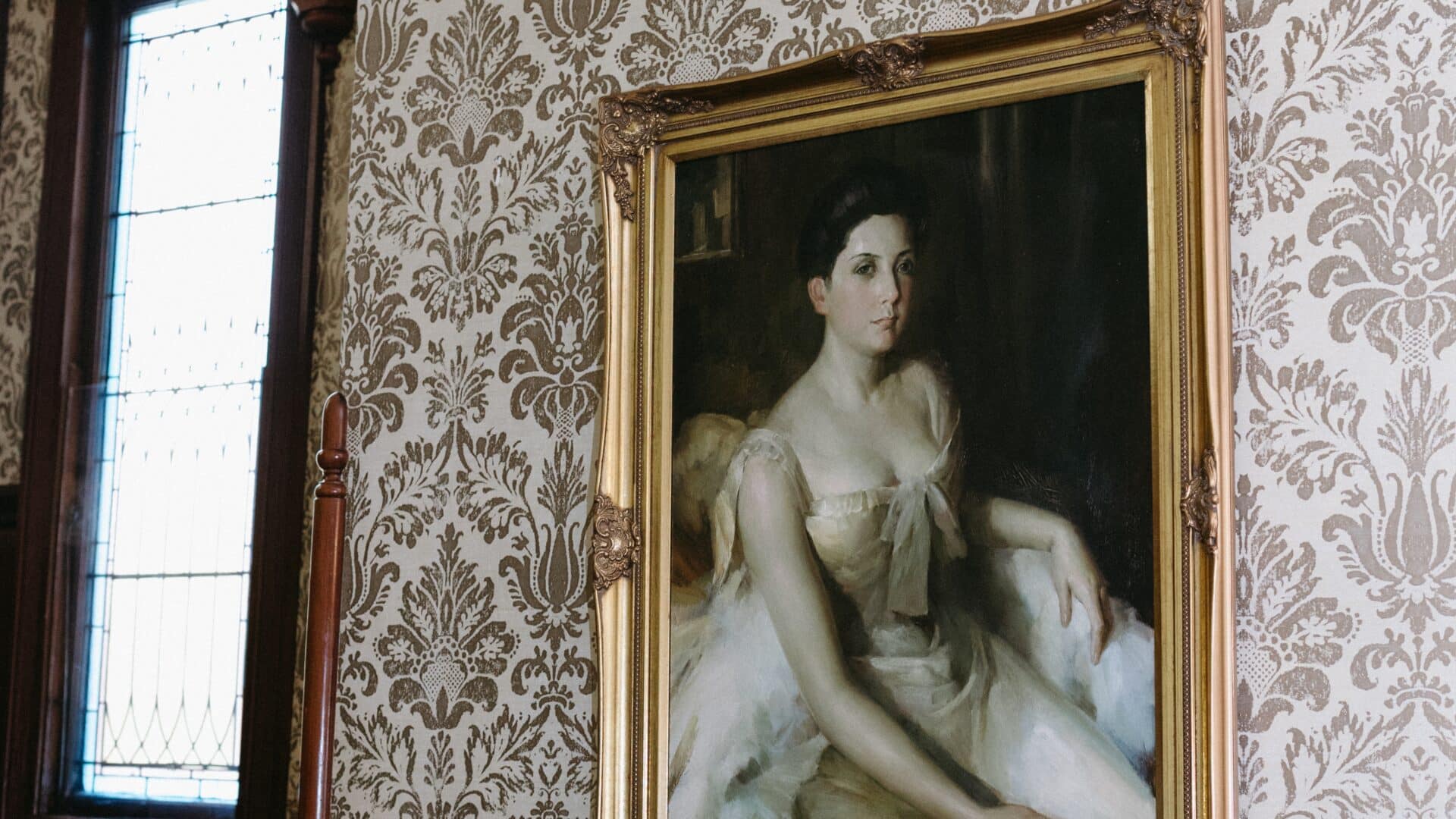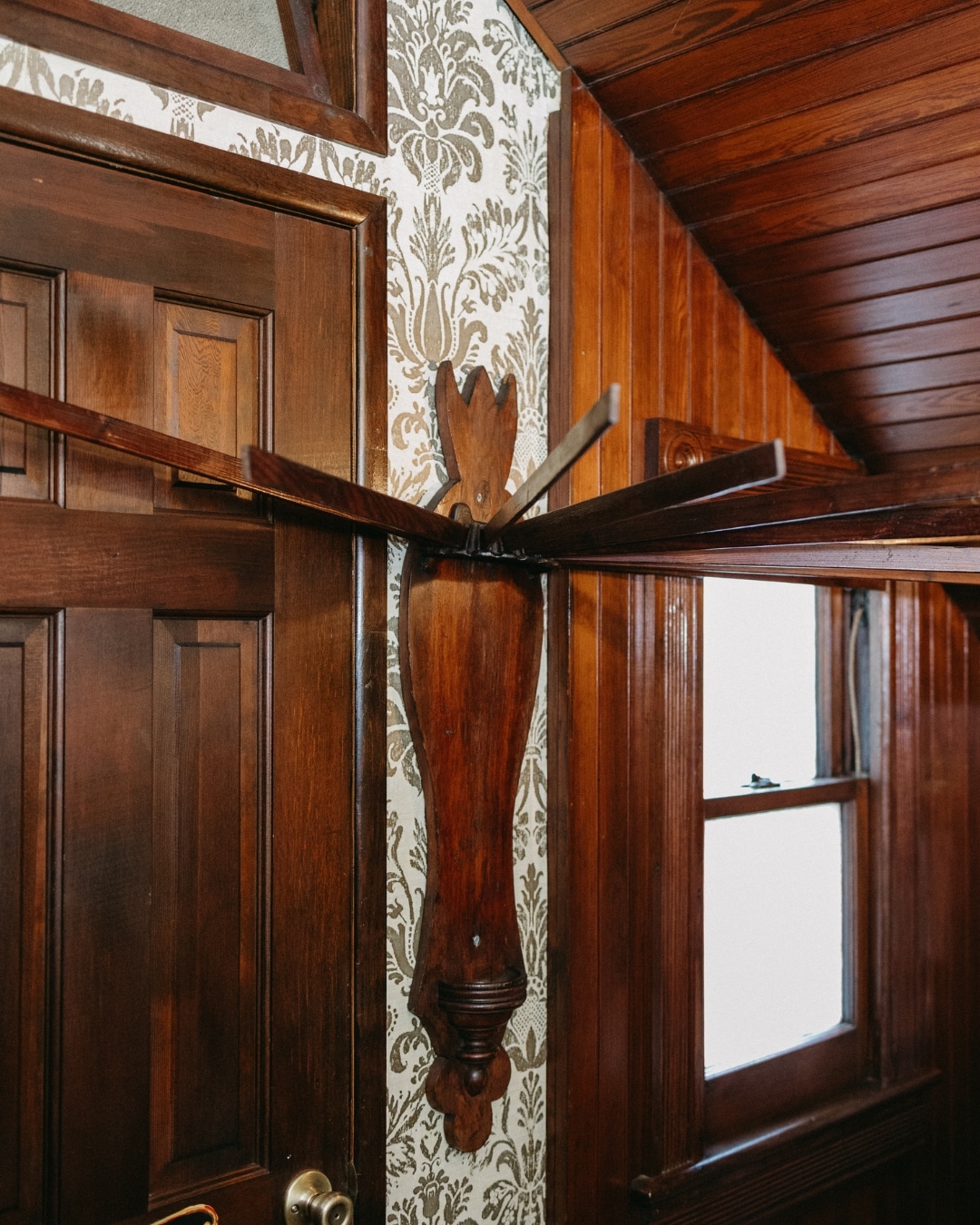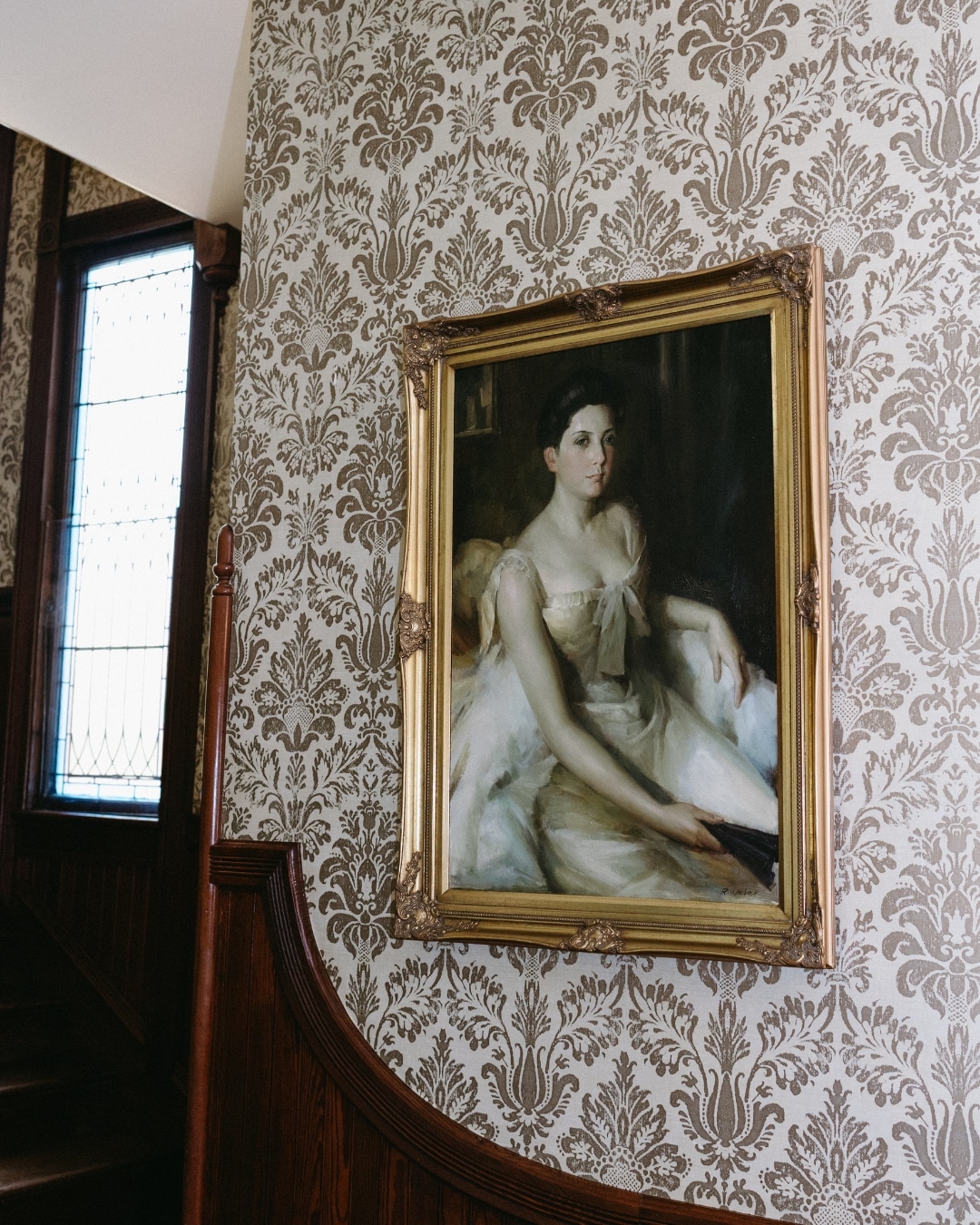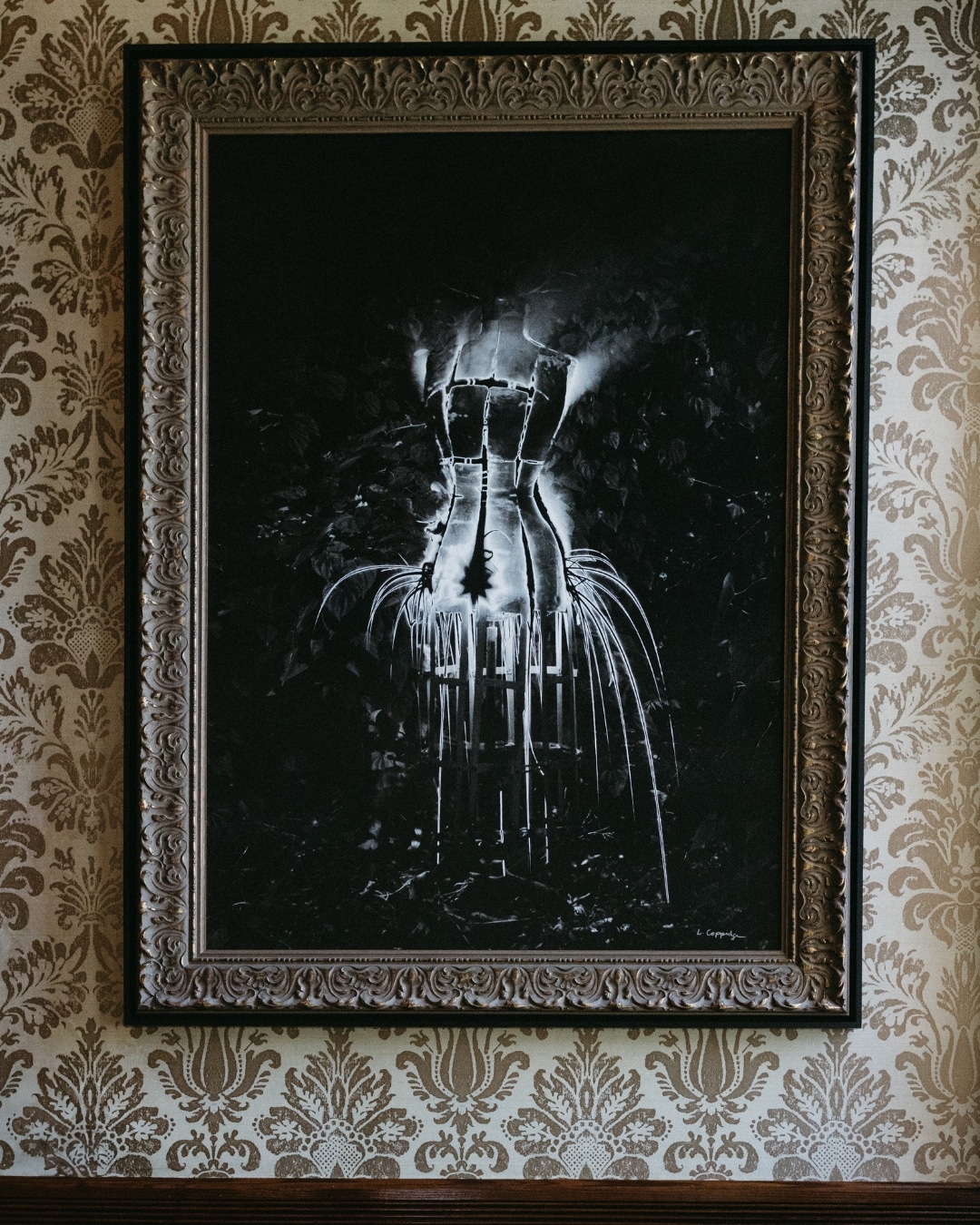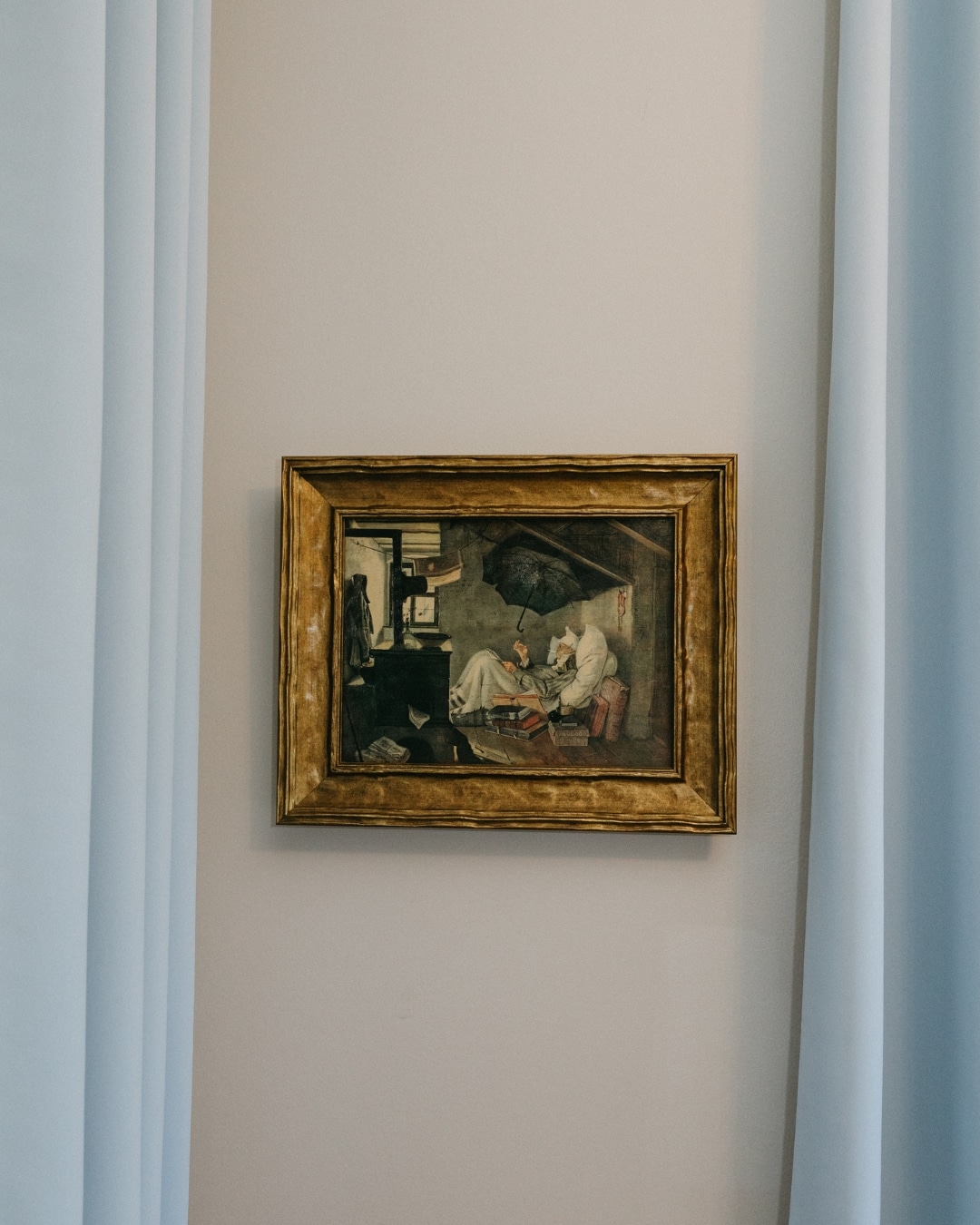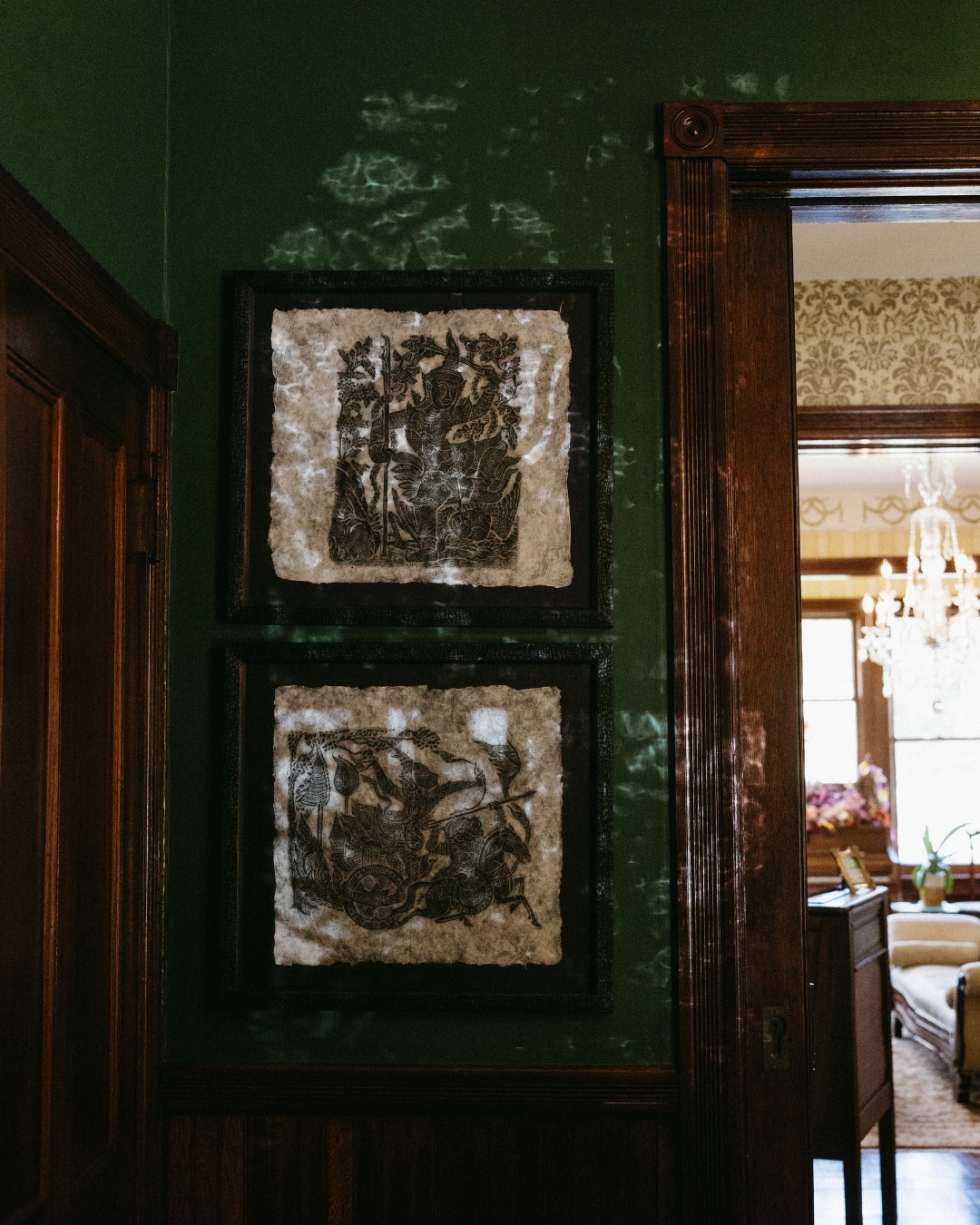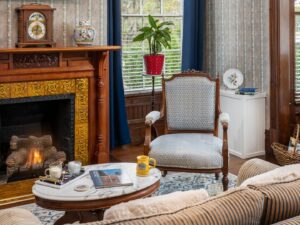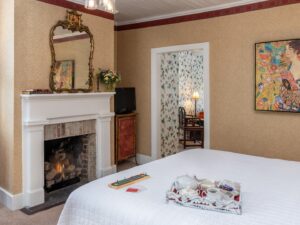Art is a curious thing. Perhaps there’s a value to something based on who the artist is. Then there is the value to the person who made it, acquired it, who loves it because it brings them joy or evokes a certain emotion. I’ve acquired the art that I own through many different avenues over the course of the last 30 or so years. I have even made some art myself. Each piece is special to me and brings me joy, makes me think or makes me question what the artist was thinking.
There are many pieces of artwork here at the Williams House that are special for me. Not necessarily because of their value, but because of how they make me feel or remind me of a certain memory. Here are some of my favorites…
The Conjurer
A few years ago, while wandering through a local antique store, I came across a print of The Conjurer by Dutch painter Hieronymus Bosch (1502). I didn’t buy it right away—I went back at least half a dozen times before finally deciding I had to bring it home. The painting depicts a charlatan captivating an audience while a man in the background quietly steals from them. But for me, it has a different meaning. It was one of the pieces my elementary school art teacher displayed in the classroom as “inspiration.” I’m not sure what he expected it to inspire in a room of eight-year-olds, but it stuck with me. It was my very first introduction to formal art, and today it hangs in the parlor of the Williams House.
A Utilitarian Sculpture
Another favorite is an Eastlake Victorian drying rack, gifted to me for my birthday by a dear friend. Though originally practical, I see it as sculpture, and it now hangs in the main hallway of the Williams House.
Assemblages of Memory
For me, art can also be a collaboration of pieces, objects, and keepsakes grouped together in a way that carries special meaning. I’ve long admired Joseph Cornell, famous for his boxed assemblages made from found objects. I’ve even traveled hundreds of miles to see his work in special exhibits.
While my version is on a much larger scale, the arrangement at the west end of the Williams House hallway always reminds me of his style.It’s an arrangement of meaningful treasures: an antique sewing machine, a drawer filled with bobbins, a vintage radio, an old Royal typewriter (that I happened to pretend that I am Marcellus or Emma Williams and write every few months on), a favorite Wendell Berry poem, a concrete Buddha, and a Victorian plant stand. Together, they remind me that art isn’t always something we buy—it’s something we create by layering pieces of our lives.
Three Works That Stop Guests in Their Tracks
A guest can’t walk into The Williams House without noticing three strikingly different and also similar pieces of art. The first is the metal dress sculpture by local artist Jarrod Bishop. Jarrod has made dresses like this for every woman in his life he’s ever loved. This one is Mrs. Castleman, named after his third-grade teacher. He pounds them out of 55-gallon drums with a hammer and an ax.
The next piece is a classical portrait of a young female, probably from the late 1800s. I do not know the history of this piece and it’s one of the few pieces that I kept from the previous owners of the Williams house. It certainly reminds me of the culture when this house was built.
The last piece is the photograph of an antique dress form with fireworks coming out of it. This is also by a local artist. I knew when I walked into the gallery, I had to have it and knew exactly where I was going to hang it.
“The Old Man Under the Weather”
Another special piece to me, I found at an estate sale a few years back. It is a small portrait of an elderly man that hangs in Smuggler’s Cove. I’ve never been able to track down the artist or the piece’s real name, but I call it The Old Man Under the Weather.
Contemporary Inspiration
My taste is quite eclectic. I can love a painting from 1502 as much as I love a Matisse from the turn of the 20th Century or a contemporary artist today. One of my favorite artists is Catrin Welz-Stein, who creates surreal mixed-media collages from vintage photos. Over the years, I’ve collected ten of her pieces, each tucked into different corners of the inn. It’s hard to pick a favorite because I love them all, but I think my newest favorite is a little collage called, Time to Say Goodbye, hanging in the Surveyor’s Studio. Marcellus Williams was a surveyor and I’m sure he spent time away from his family working. For me this painting, although quite contemporary, evokes feelings of travel and missing family, but also adventure.
Each room of the Williams House holds its own little gallery, pieces chosen not for prestige but for meaning. That, I think, is the real beauty of art: it doesn’t just decorate a space, it invites you into a story. When you visit, I hope you’ll take time to wander and notice what speaks to you. After all, the art of the Williams House isn’t just on the walls, it’s in the way history, memory, and imagination come together here.
